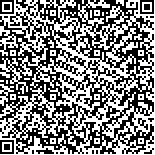| 摘要: |
| 大型水母沙海蜇旺发已成为黄海夏季的一个常见的生态现象。然而,沙海蜇旺发与微小型浮游动物尤其是纤毛虫的相互作用关系依然不明。本研究基于2013年6月(水母旺发初期)、8月和9月(水母旺发期)三个航次的调查,对黄海水母高发的I(33°N)、G(34°N)、E(35°N)断面的表层微小型浮游动物的丰度及生物量分布变化与水母发生关系进行探讨。微型鞭毛虫丰度6月平均丰度和生物量分别为357ind./mL和3.92μgC/L,至8月降为145ind./mL和2.55μgC/L,9月回升至160ind./mL和2.84μgC/L。共鉴定纤毛虫31属64种,三个月份纤毛虫的种类组成差别不大。纤毛虫6月的平均丰度和生物量分别为2282ind./L和8.93μgC/L,至8月降为933ind./L和3.92μgC/L,9月回升至2319ind./L和6.55μgC/L。与丰度和生物量的较大变化不同,纤毛虫6月的平均生产力为12.74μgC/(L·d),8月降至7.39μgC/(L·d),9月略增至7.79μgC/(L·d)。桡足类无节幼体仅见于6月(10.59ind./L)和8月(8ind./L),在沙海蜇旺发的8月其平均生物量(0.08μgC/L)和生产力(0.032μgC/(L·d))远低于纤毛虫。本研究表明,在南黄海水母发生过程中,纤毛虫在微小型浮游动物的生物量和生产力中占据了主导地位,并受到水母旺发的直接和间接(级联效应)影响。 |
| 关键词: 黄海 大型水母 纤毛虫 鞭毛虫 微型浮游动物 小型浮游动物 |
| DOI:10.11693/hyhz20160200037 |
| 分类号: |
| 基金项目:国家重点基础研究发展计划(973)项目,2011CB403604号;国家自然科学基金项目,41476144号 |
附件 |
|
| ABUNDANCE AND BIOMASS OF NANO- AND MICROZOOPLANKTON IN PARTICULAR CILIATES IN RELATION TO THE MASS OCCURRENCE OF NEMOPILEMA NOMURAI IN THE SOUTHERN YELLOW SEA IN SUMMER AND AUTUMN |
|
LI Jie1,2,3, XU Kui-Dong1,2
|
|
1.Department of Marine Organism Taxonomy &2.Phylogeny, Institute of Oceanology, Chinese Academy of Sciences, Qingdao 266071, China;3.University of Chinese Academy of Sciences, Beijing 100049, China
|
| Abstract: |
The mass occurrence of giant jellyfish Nemopilema nomurai has been a frequent phenomenon in the Yellow Sea in summer in recent years. However, relationship between the jellyfish and nano- and microzooplankton remains unclear. We investigated the community structure and dynamics of nano- and microzooplankton at transects I (33°N), G (34°N) and E (35°N) in the southern Yellow Sea during the jellyfish fast growth and spreading in June and the blooming in August and September, 2013. The abundance and biomass of nanoflagellates were (in average and respective manner hereinafter) 357ind./mL and 3.92μgC/L in June, greatly decreased to about 145ind./mL and 2.55μgC/L in August, and slightly increased to 160ind./mL and 2.84μgC/L in September. A total of 64 ciliate species belonging to 31 genera were identified, and no great change was observed in species composition in the three months. The abundance and biomass of ciliates were 2282ind./L and 8.93μgC/L in June, quickly dropped to 933ind./L and 3.92μgC/L in August, and boost up to 2319ind./L and 6.55μgC/L in September. The productivity of ciliates was 12.74, 7.39, and 7.79μgC/(L·d). Copepod nauplii occurred in June and August in mean abundance of 10.59ind./L in June and 8ind./L in August. Both biomass (0.08μgC/L) and productivity (0.032μgC/(L·d)) were much less than those of ciliates in August. Therefore, ciliates dominated the biomass and productivity of nano- and microzooplankton during N. nomurai bloom in the southern Yellow Sea, and were affected by the giant jellyfish directly, or indirectly in cascading effect.
|
| Key words: Yellow Sea giant jellyfish ciliates flagellates nanozooplankton microzooplankton |
